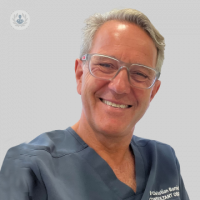Enhancing your fertility: why removing polyps and fibroids matters before conception
Autore:Abnormal growths, such as polyps and fibroids, in the uterus can obstruct fertility, which is why those are considering pregnancy, now or in the future, are recommended to get them removed. A leading obstetrician and gynaecologist explains why in this article.

What are polyps and fibroids?
Uterine polyps are small bumps of overgrown endometrial tissue that grow on the inner lining of the uterus. Some people may only develop one or two, but others may find themselves afflicted with many. Polyps can disrupt the menstrual cycle, causing irregular, painful and heavy bleeding, and can grow to block the fallopian tubes. Polyps can possibly turn cancerous. But they can also regress and shrink all on their own.
Fibroids are benign (non-cancerous) growths made of fibrous tissue. They can grow inside, or around the uterus. They can start off as very small, but may expand significantly and distort the uterus. They are common, with around 75% of people with uteruses developing in their lifetime, but majority are asymptomatic and will eventually be reabsorbed back into the body. But some do cause issues, such as heavy, painful, and irregular menstrual bleeding as well, urinary disorders, and even distending the stomach. There are different categories of fibroids, based on where they are located.
How do polyps and fibroids affect pregnancy?
People who have tried unsuccessfully to get pregnant for time, or have had multiple miscarriages may be afflicted with polyps or fibroids.
A study published by Fertility and Sterility, an international journal of reproductive medicine, reports that one in seven women who were considered infertile also had uterine polyps. Another trial showed that pregnancy rates went up to 63% percent after a polyp removal, as opposed to 28% without a removal.
Polyps may obstruct pregnancy by irritating the uterine lining, inhibiting a fertilised egg from attaching to the uterine walls. They may even block an egg from getting fertilised entirely, by blocking sperm from joining an egg or from entering the uterus. Embryos in the early stages of development are more likely to fail in the presence of polyps, causing miscarriages. Those who are looking into in-vitro fertilisation (IVF) are still susceptible to the risks of miscarriage due to polyps.
Fibroids can cause fertility issues – especially those located by the fallopian tubes or those that are submucosal (which means they grow on the inside of the uterine cavity). Fibroids that are by the fallopian tubes block eggs leaving the ovaries, and those that are submucosal grow in the interior walls of the uterus, taking space in the uterine cavity and making it difficult for an egg to be implanted successfully. If the uterus’ shape becomes warped, which is likely to happen when fibroids continue to expand, the number of sperm that can enter is affected, again lowering the chances of a successful pregnancy.
If there is a successful embryo in a uterus that has fibroids, there is no guarantee it will survive, as fibroids can also redirect blood flow from the uterus. In some cases, fibroids can cause miscarriage, placental abruption, and a breech birth. Women who have fibroids are also six times more likely to need a C-section.
How are polyps and fibroids removed?
Polyps can be only be removed surgically, in what is called a polypectomy. It can be performed endoscopically, in which the surgeons access the uterine cavity via small incisions on the abdomen with instruments and a thin camera called an endoscope, or as a hysteroscopy, where the uterine cavity is accessed instead via the vagina. The surgeon is the able to remove the polyps by cutting or cauterising it off.
Fibroids can be removed with a variety of ways, depending on their size and location.
Procedures include:
- Uterine artery embolization, where the blood supply to the fibroids is cut off, causing them to shrivel. This is a nonsurgical option.
- Endometrial ablation, where lasers or heat are used to remove the uterine lining and it can be used to remove smaller fibroids. However, this method many be detrimental to fertility.
- Myomectomy, where fibroids are removed from the uterus, but the uterus is left in place. Fibroids may reoccur after this procedure, especially submucosal.
All of these procedures are day cases, and patients are able to go home afterwards, though they may experience some discomfort and light bleeding.
The removal of polyps and fibroids cannot guarantee a successful pregnancy, but they certainly increase the chances and remove some of the obstructions in the road to parenthood. If you have be struggling to get or maintain a pregnancy, consider scheduling an appointment with your gynaecologist to examine your uterus and see if you have polyps and fibroids.
If you are having fertility issues, you can book a consultation with a specialist via Top Doctors.


